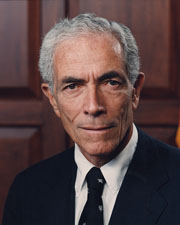
In 1972, Congress passed and President Richard Nixon signed into law the 1972 amendments to the Higher Education Act of 1965. A key aspect of the legislation was the creation of the Basic Educational Opportunity Grant program (BEOG), later renamed the Pell Grant program in 1980 after the late Senator Claiborne Pell. Senator Pell was the key champion for the creation of the BEOG program.
Since the passage of this legislation, tens of millions of undergraduate college students have received a total of over $280 billion in Pell Grants from the federal government. Pell Grants are awarded based only on the financial need of the student and/or her family, and they are designed to be the foundation grant for promoting college access. This school year alone, almost 10 million students will receive over $35 billion in Pell Grants.
To celebrate the 40th anniversary of the creation of the BEOG/Pell program, the Council for Opportunity in Education sponsored a symposium on Pell grants at its annual conference in New York City last week. I was one of the speakers there discussing the impact Pell Grants have had on college access for students from low- and moderate-income families in the country (you can see a copy of the slides from my presentation on my publications page). In addition, former Pell Grant recipients – one each from the decades of the 1970s, 1980s, 1990s, and the current decade – were honored. And documentary filmmakers Elyse Katz and Steven Feinberg showed an excerpt of their film, “Pell Grants: A Passion for Education,” which describes the history of the program and Senator Pell’s involvement in creating it.
The rising cost of attending college is very much on the radar screen of politicians as well as the general public. I wrote this summer about a Senate hearing on the topic at which I testified. President Obama, in his nomination acceptance speech, spoke four times about the topic. And The New York Times featured another story on the topic recently. With this concern about the growing cost of college – and whether federal aid has contributed to rising costs – few federal educational programs have received as consistent, bipartisan support as has the Pell Grant program. The fact that it has received this support for 40 years is a testament to the role it has played in promoting opportunity for students from groups who historically have been underrepresented in higher education in the country.